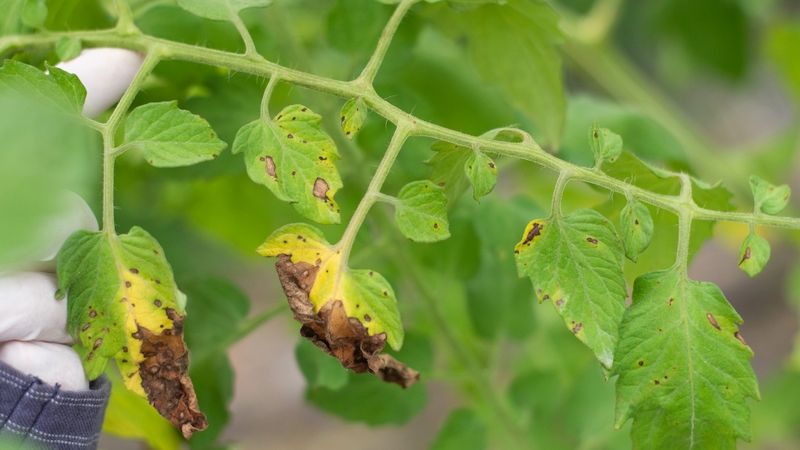Working On Profits

 United Potato Growers of America is a cooperative that’s making a difference in the industry. Since late 2004 when a group of potato growers in Idaho started talking about doing something to stop the constant overproduction and get potato supplies in line with demand — nationwide — the situation is slowly being rectified.
United Potato Growers of America is a cooperative that’s making a difference in the industry. Since late 2004 when a group of potato growers in Idaho started talking about doing something to stop the constant overproduction and get potato supplies in line with demand — nationwide — the situation is slowly being rectified.
That in no way means that potato growers are wading in a sea of profits, says Albert Wada of Wada Farms in Idaho, one of AVG’s Top 100 growers. Wada is one of the driving forces behind the organization and currently serves as the group’s chairman of the board.
To date, thanks to the work of Wada and the United movement, significant improvements are being made with regard to acreage management. With the help of data analysis systems, the organization is able to determine where to draw the line when planting. The result, according to Wada, is that these member growers are in a much better position to be successful in balancing supply with demand.
AVG had a chance to ask Albert Wada some questions about the group and find out where he sees the potato industry headed in the future.
Q: What were some of the hidden benefits growers reaped after joining United?
A: United’s core mission is, and has always been, to better balance potato supplies to proven demand at sustainably profitable levels for potato growers. However, even though the cooperative may manage acres and the total supply, it was recognized that excessive daily “pipeline� supplies offered into the market were depressing the market and causing irrational peaks and valleys in pricing and returns to growers.
A statistically driven “Pack Plan� was created to be able to monitor the crop movement into the market, helping to stabilize the market and better meter supplies into the marketplace, helping customers to stabilize their pricing as well.
Q: How many areas of the country are not part of United? Will the organization approach the remaining areas?
A: The Red River Valley’s (Minnesota and North Dakota) fresh grower industry is studying membership in United, with some growers there currently participating with United in the development of a red variety pack plan and data system.
United is talking to other red and yellow variety growing areas (Western Washington, Southern California, Mid-Atlantic states, Florida, Arizona etc.) in order to bring the vision and rationale as to the value of grower collaboration in a variety data and supply management system. It remains to be seen whether there will be interest enough for these areas to join with United.
Maine and the Mid-Atlantic states have thus far been resistant to working with United. There is some feeling that United is a large western grower organization and that smaller growers in the Mid-Atlantic and Northeast cannot directly benefit from the cooperative. United continues to talk with these areas. Potato grower supply management should represent the entire “pile of potatoes,� in United’s opinion, in that this pile all funnels into the national/North American supply pipeline. Oversupply in any one region can adversely affect the market for all growers. Oversupply and low fresh market prices will adversely affect the contract pricing for chip and frozen potato producers as well.
United Potato Growers of America continues to work closely in its alliance with sister organization United Potato Growers of Canada (which includes 95% of all potatoes grown in Canada) and the Potato Marketing Association of North America, representing some 80% of frozen french-fry process growers in the U.S. and Canada. United Potato Growers of America through its eight regional cooperative chapters probably represents about 70% of fresh potatoes grown in the U.S.
There also is some emerging interest offshore in the United Potato Grower cooperative system from New Zealand and Australia.
Q: What are the major challenges ahead for United?
A: This has been a gratifying experience because we actually have made a difference. One of the biggest challenges now is to get hugely independent-thinking growers together and keep them at the table when they start to get profitable again. It is easier to keep them at the table when they aren’t profitable.
Times are better for growers, but not good. A lot of these growing regions are at or below the cost of production. There are still many bills to pay as a result of past overproduction.
Q. What are the organization’s goals for the next few years?
A: Overall goals are to:
• Maintain long-term sustainable acreage management programs at levels that will result in sustainably profitable prices for potato growers and stable and reasonable prices for potato customers and consumers.
• Continue to evolve United’s proprietary information and econometric data systems in order to make better decisions on supply management based on accurate, quality data in terms of supply and demand.
• Create added-value for members through continued development of corporate supplier partnering programs that will help to defray the cost of membership through funding/supporting United’s data system, through continued consolidation and integration efforts. United we stand, divided we fall.










